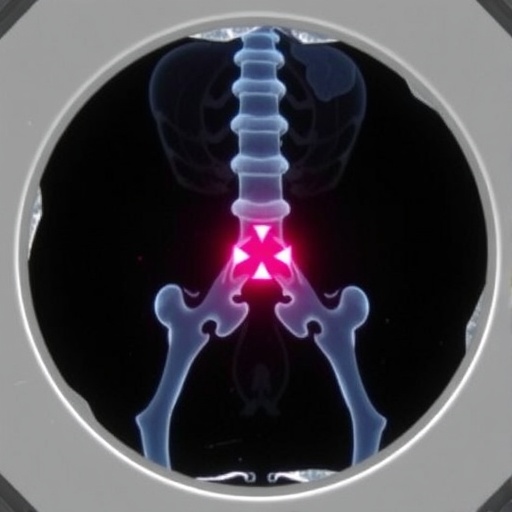In a groundbreaking Phase I clinical trial, researchers have advanced our understanding of the pharmacokinetics, safety, and tolerability of capivasertib, both as a standalone therapy and in combination with paclitaxel, in Chinese patients battling advanced solid tumors. Capivasertib, a potent inhibitor targeting the AKT pathway, holds promise particularly in hormone receptor-positive breast cancer patients exhibiting PIK3CA, AKT1, or PTEN mutations. The study marks a pivotal step toward developing more personalized cancer therapies tailored to the genomic profile of tumors prevalent in diverse populations.
The trial, conducted under open-label and fixed-sequence protocols, enrolled sixteen Chinese patients with advanced solid tumors resistant to conventional therapies. The design meticulously evaluated the pharmacokinetic profile of capivasertib administered alone and subsequently combined with paclitaxel, a well-established chemotherapeutic agent. Patients first received capivasertib monotherapy at a 480 mg dose, followed by combination therapy with capivasertib at 400 mg along with weekly paclitaxel infusions, administered in cyclical patterns to optimize drug exposure and minimize toxicity.
Capivasertib’s pharmacokinetics revealed rapid absorption with peak plasma concentrations observed within approximately one hour post-dose. After a single administration, the drug attained a geometric mean maximum plasma concentration of 1465 ng/mL, accompanied by an area under the curve (AUC) of 7243 h×ng/mL. The elimination half-life hovered around 9.7 hours, indicating a duration suitable for twice-daily dosing to maintain therapeutic drug levels. These parameters confirmed that capivasertib exhibits favorable pharmacologic properties in the Chinese patient cohort, aligning with prior data from Western and Japanese populations.
Upon repeated dosing, capivasertib demonstrated dose accumulation, with increased maximum plasma concentration and AUC values, signifying sustained systemic exposure when administered twice daily on a 4-day-on, 3-day-off schedule. Notably, when administered in combination with paclitaxel, capivasertib’s pharmacokinetic profile remained comparable, suggesting minimal pharmacodynamic interaction that could alter its metabolism or clearance. This finding emboldens the pursuit of combination regimens integrating capivasertib and conventional chemotherapy.
Clinically, the manageable safety profile observed throughout the study fuels optimism about capivasertib’s therapeutic window. The most common treatment-emergent adverse events included hyperglycemia, diarrhea, and rash—typical side effects attributed to AKT inhibition impacting insulin signaling and dermatologic homeostasis. Importantly, the majority of adverse events were classified as Grade 1 or 2, indicating mild to moderate severity manageable through established supportive care measures without necessitating treatment discontinuation.
Efficacy signals, though preliminary, offered encouraging insights. Four patients achieved confirmed partial responses, while an additional four exhibited stable disease as their best objective response, translating to a disease control rate of 50%. This clinical activity underscores capivasertib’s potential to induce meaningful tumor suppression even in a heavily pretreated advanced cancer population, a traditionally difficult-to-treat group where therapeutic options remain limited.
The detailed pharmacokinetic analysis, paired with safety observations, paves the way for further clinical development. Capivasertib’s rapid absorption and elimination kinetics favor flexible dosing strategies, potentially facilitating integration with various combination partners beyond paclitaxel. Furthermore, the trial sheds light on ethnic and regional pharmacogenomic considerations, ensuring that drug development pathways are inclusive and reflective of patient diversity.
Understanding the molecular underpinnings guiding capivasertib’s activity is crucial. As an AKT inhibitor, it targets a central node in the PI3K/AKT/mTOR signaling cascade, frequently dysregulated in cancers harboring PIK3CA mutations or PTEN loss. By mitigating aberrant survival and proliferative signals, capivasertib effectively curtails tumor growth and enhances chemotherapy sensitivity, offering a multi-pronged approach to combat oncogenic drivers.
The trial’s open-label design allowed investigators to closely monitor pharmacokinetic parameters and adverse events, contributing to a comprehensive safety assessment. The fixed-sequence administration—beginning with capivasertib monotherapy followed by combination therapy—enabled clear attribution of effects to each regimen phase, a critical feature in early-phase oncology trials where safety and dosing strategies are paramount.
Importantly, this research builds upon existing pharmacokinetic data from Western and Japanese populations, affirming that capivasertib’s behavior in Chinese patients is consistent and predictable. This cross-population similarity facilitates global drug development and regulatory considerations, ensuring broader access to innovative therapies and harmonized treatment standards internationally.
While still in early clinical phases, the study addresses an urgent unmet need by focusing on advanced solid tumors resistant to standard treatments. The integration of capivasertib with paclitaxel could offer a novel therapeutic avenue, potentially enhancing treatment efficacy and delaying progression in aggressive cancer settings commonly encountered in clinical oncology practice.
Moreover, the trial incorporated rigorous criteria to gauge objective tumor responses, utilizing investigator assessments aligned with standardized oncology response evaluation metrics. This methodological rigor bolsters the validity of the observed partial responses and disease stabilization, engendering confidence in capivasertib’s antitumor activity signals deserving of further exploration in larger cohorts.
The translational implications are profound. The data affirm the rationale for incorporating precision medicine principles into drug development, tailoring interventions to specific molecular alterations prevalent within patient subsets. Capivasertib exemplifies how targeting critical signaling pathways can revolutionize therapeutic paradigms, potentially improving outcomes in patient populations historically plagued by limited options.
Looking ahead, expanded Phase II and III trials are warranted to validate these early findings, optimize dosing regimens, and explore combinational synergy with other targeted agents. Longitudinal studies could also elucidate resistance mechanisms and refine biomarker strategies to predict response, enhancing therapeutic personalization further.
This seminal investigation signifies a milestone in oncology pharmacology, advancing the promise of capivasertib as a versatile and potent agent against advanced solid tumors. Its favorable pharmacokinetic profile, combined with manageable toxicity and preliminary efficacy signals, advocates for continued clinical development and eventual integration into standard cancer care protocols, particularly within diverse Asian populations.
The trial’s registration on ClinicalTrials.gov (NCT04742036) underscores the commitment to transparency and scientific rigor, providing a foundation for collaborative research endeavors worldwide. Such early-phase studies remain vital in bridging preclinical promise with clinical reality, ultimately translating molecular insights into tangible patient benefits.
Subject of Research: The study focuses on investigating the pharmacokinetics, safety, and tolerability of capivasertib, alone or combined with paclitaxel, in Chinese patients with advanced solid tumors.
Article Title: A Phase I open-label study to assess the pharmacokinetics, safety, and tolerability of capivasertib alone or in combination with paclitaxel in Chinese patients with advanced solid tumors.
Article References: Zhang, J., Liu, X., Du, Y. et al. A Phase I open-label study to assess the pharmacokinetics, safety, and tolerability of capivasertib alone or in combination with paclitaxel in Chinese patients with advanced solid tumors. BMC Cancer 25, 1562 (2025). https://doi.org/10.1186/s12885-025-14982-4
Image Credits: Scienmag.com
DOI: https://doi.org/10.1186/s12885-025-14982-4
Keywords: Capivasertib, AKT inhibitor, pharmacokinetics, advanced solid tumors, Chinese patients, paclitaxel, cancer therapy, PI3K/AKT/mTOR pathway, Phase I clinical trial, safety, tolerability, combination therapy
Tags: advanced solid tumors in Chinese patientsAKT pathway inhibitors in cancercapivasertib pharmacokinetics studychemotherapy resistance in cancer patientscombination therapy capivasertib paclitaxeldrug absorption and peak plasma concentrationhormone receptor-positive breast cancer treatmentopen-label clinical trial designpersonalized cancer therapies for diverse populationsPhase I clinical trial in oncologyPIK3CA AKT1 PTEN mutationssafety and tolerability of capivasertib





